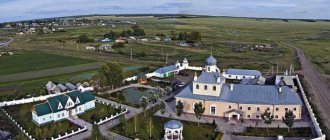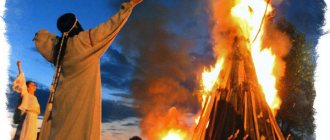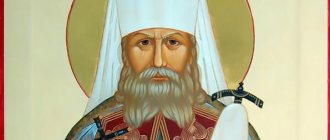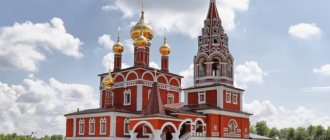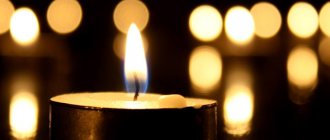Russian Orthodox Church
Born on May 27, 1974 in Krasnoyarsk.
In 1992-1995. studied at Krasnoyarsk State Technical University.
In 1995-1999 studied at the Moscow Theological Seminary. In 1999-2003 studied at the Moscow Theological Academy. During the years of study at Moscow theological schools, he served as editor of the website of the Moscow Theological Academy, deputy editor of the website of the Educational Committee of the Holy Synod.
In 1999-2007 bore the obedience of the referent of the Synodal Theological Commission.
In June-October 2003 - assistant to the vice-rector for educational work at the Moscow Theological Academy. From October 2003 to August 2007 - Assistant to the Vice-Rector for Scientific and Theological Work of the Moscow Theological Academy.
On March 31, 2006, in the Trinity Cathedral of the Holy Trinity Sergius Lavra, he was tonsured a monk with the name Isidore in honor of the holy martyr Isidore of Chios.
On April 16, 2006, in the Intercession Academic Church, the rector of Moscow theological schools, Archbishop Eugene of Vereisky, ordained him a hierodeacon, and on December 19 of the same year, he was ordained a hieromonk.
By determination of the Holy Synod of August 21, 2007 (journal No. 77), he was appointed rector of the Yaroslavl Theological Seminary.
On April 19, 2009 he was elevated to the rank of abbot.
By the determination of the Holy Synod of July 27, 2009 (magazine No. 75), he was relieved of the post of rector of the Yaroslavl Theological Seminary and placed at the disposal of the Patriarch of Moscow and All Rus'. On August 1, 2009, he was appointed to the position of specialist in the Moscow Patriarchate Administration for work with dioceses and monasteries.
By decree of the Patriarch of Moscow and All Rus' dated July 7, 2010, he was appointed executive secretary of the Administration of the Moscow Patriarchate (released due to his appointment in July 2012 as abbot of the Vysoko-Petrovsky Monastery).
In March-July 2012 - rector of the Church of St. App. Peter and Paul in Lefortovo, Moscow.
By the decision of the Holy Synod of July 26, 2012 (magazine No. 77), he was appointed to the position of abbot of the Vysoko-Petrovsky stauropegic monastery in Moscow.
By the decision of the Holy Synod of December 26, 2012 (journal No. 135), he was appointed deputy chairman of the Synodal Department for Youth Affairs.
By the decision of the Holy Synod of March 12, 2013 (magazine No. 23), he was elected Bishop of Smolensk and Vyazemsky with dismissal from the posts of vicar of the Vysoko-Petrovsky Monastery and deputy chairman of the Synodal Department for Youth Affairs.
On March 14, 2013, His Holiness Patriarch Kirill elevated him to the rank of archimandrite.
He was ordained bishop on March 15, 2013, in the Church of All Saints, in the Land of Russia, the Patriarchal Residence in the Danilov Monastery in Moscow. He was consecrated on March 17 at the Divine Liturgy in the Trinity Cathedral of the Danilov Monastery in Moscow. The services were led by His Holiness Patriarch Kirill of Moscow and All Rus'.
By the decision of the Holy Synod of May 5, 2015 (journal No. was appointed the head of the Smolensk Metropolis with the title “Smolensk and Roslavl”.
was appointed the head of the Smolensk Metropolis with the title “Smolensk and Roslavl”.
On May 21, 2015, during the Liturgy in the Ascension Cathedral in Ulyanovsk, His Holiness Patriarch Kirill elevated him to the rank of metropolitan.
By the decision of the Holy Synod of December 24, 2015 (journal No. 109), he was appointed rector of the Smolensk Theological Seminary.
From May 4, 2021 - Smolensk and Dorogobuzh, in connection with the formation of the Roslavl diocese.
On June 25, 2021, he defended his candidate’s dissertation at the Moscow Theological Academy on the topic “The life and work of Bishop Ioann (Sokolov) of Smolensk and Dorogobuzh.”
By the decision of the Holy Synod of July 16-17, 2021 (magazine No. 44), he was confirmed as the Holy Archimandrite of the Spaso-Preobrazhensky Avraamiev Monastery in the city of Smolensk and the monastery of the Novoordinskaya Porechskaya Mother of God-Nativity Hermitage in the village of Baklanovo, Demidovsky district, Smolensk region.
His Eminence Sergius, Bishop of Vyazemsky and Gagarinsky
(Zyatkov Sergey Anatolyevich)
Born on February 15, 1967 in the village of Drozdovo, Yartsevo district, Smolensk region, in a family of workers.
In 1982 he graduated from eight classes of the Repinsky secondary school in the Yartsevo district. In 1982-1984. studied at SGPTU-161 in Moscow.
Since 1984, with the blessing of the Archbishop of Smolensk and Vyazemsky, Theodosius became a subdeacon at the Assumption Cathedral of Smolensk.
In 1985-1987 served in the ranks of the Soviet army, at the end of his service he returned to the disposal of Archbishop Kirill of Smolensk and Vyazemsky.
In April 1988, Archbishop Kirill of Smolensk tonsured him into a cassock with the name Sergius in honor of St. Sergius, abbot of Valaam, and made him a subdeacon.
On August 28, 1988, Archbishop Kirill of Smolensk ordained him to the rank of hierodeacon, and on October 14, he was ordained to the rank of hieromonk.
On October 25, 1988, he was appointed rector of the Church of the Intercession in the city of Demidov, Smolensk diocese. On December 25, 1991, he was appointed dean of the Demidov district.
On April 23, 1992, Metropolitan Kirill of Smolensk and Kaliningrad tonsured him into the mantle with the same name.
On September 1, 1995, he was appointed rector of the Transfiguration Cathedral in Roslavl and dean of the Roslavl district.
In 1995 he graduated from the Moscow Theological Seminary in absentia.
On April 17, 1996, on the occasion of Holy Easter, he was elevated to the rank of abbot.
On September 2, 1996, he was appointed rector of the Roslavl Spaso-Preobrazhensky Monastery.
From November 5, 1999 to October 6, 2001 – rector of the Church of St. mts. Zinaida, Rio de Janeiro (Brazil).
On November 4, 2001, he was appointed rector of the Spaso-Preobrazhensky Monastery in Roslavl and director of the Orthodox gymnasium No. 2 in Roslavl, Smolensk region. On March 21, 2002, he was appointed rector of the monastery's courtyard - the parish of St. Stephen of Velikoperm in Desnogorsk, maintaining the previously assigned obediences. In 2003, he was appointed dean of the Roslavl district.
On January 9, 2007, Metropolitan Kirill of Smolensk elevated him to the rank of archimandrite.
On December 14, 2012, he was released from the post of dean of the Roslavl district at his own request.
In 2013, he graduated from the branch of the Moscow Institute of Public Administration and Law in the Smolensk region with the qualification “lawyer” with a specialty in “Jurisprudence”.
On July 31, 2014, he was appointed head of the commission for monasteries of the Smolensk diocese.
On August 20, 2014, he was relieved of his position as director of Orthodox gymnasium No. 2 in Roslavl at his own request.
By the decision of the Holy Synod of May 5, 2015 (journal No.), he was elected Bishop of Vyazemsky and Gagarinsky.
he was elected Bishop of Vyazemsky and Gagarinsky.
He was ordained bishop on May 16, 2015 in the house church of the Patriarchal residence in the Danilov Monastery in Moscow.
On May 21, 2015, on the Feast of the Ascension of the Lord, during the Divine Liturgy in the Spaso-Ascension Cathedral in Ulyanovsk, Archimandrite Sergius (Zyatkov) was consecrated as Bishop of Vyazemsky and Gagarin.
About the Internet
Over the past two decades, our Church has mastered new forms of preaching, including the use of modern technologies. In this regard, we are already ahead of many not only in the Orthodox world, but also among the largest religious communities in general. In particular, evangelistic work has constantly been and is being carried out via the Internet. Orthodox TV channels and radio stations, programs and sections on secular radio and television have emerged and are operating stably. The fundamental scientific publishing project “Orthodox Encyclopedia” deserves special mention, expanding its scope to include the space of broadcast and electronic media.
About circulations
After the fall of the state's atheistic system, new church publishing houses were created, and Orthodox media outlets arose in large numbers. All of them took an active part in educational and catechetical work. The Holy Scriptures, liturgical, doctrinal and patristic texts were reprinted in large editions. Books of a church-historical, scientific-theological, philosophical and religious-social nature were actively published. Missionary and spiritually edifying Orthodox literature became widespread. Works of art have appeared that comprehend the life of modern man in the light of the Orthodox worldview.
About the social activities of the Church
A manifestation of the spirit of Christian love is the social activity of the Church, its service to those who most need to show care and sacrifice: these are the elderly and people suffering from illnesses, orphans, the disabled, and people in prison. Despite the complete destruction of the system of church charity in Soviet times, church shelters, clinics, services for helping the sick and homeless, rehabilitation centers, schools and courses for nurses, charity canteens, and other social institutions are now successfully operating.
On relations with heterodox confessions
The relations of our Church with heterodox confessions during the period under review underwent a number of serious tests. After the political transformations of the late 1980s and early 1990s, a stream of missionaries poured into the newly opened space of the former Soviet Union. They tried to convert masses of people who, as they believed, were all atheists who had long lost their spiritual roots. Instead of the mutual support that we felt from a number of heterodox associations during the years of oppression by the godless authorities, our Church was faced with a desire to squeeze it out, depriving it of the opportunity to restore its spiritual influence on the people. For the most part, active proselytism was carried out by preachers from various Protestant denominations, but we were sad to see representatives of the Catholic clergy and monastic orders in the ranks of the newly-minted “enlighteners of Rus'”.
However, today we can safely say that our people have successfully withstood the strongest proselytizing onslaught from the outside. This happened thanks to the firmness in the Orthodox faith of millions of ordinary people, as well as the unyielding position and decisive actions of the Hierarchy of the Moscow Patriarchate.
On the relationship of the Church with society
<…> After the destruction of artificial barriers between the Church and the people, many people felt that they belonged to the Orthodox faith and culture. Today, the majority of citizens of Russia, Ukraine, Belarus, Moldova, as well as many residents of neighboring countries call themselves Orthodox, although sometimes they remain people with little church life. This state of society has been and remains a serious challenge for our Church.
Much work is being done today to ensure that children in public schools have the opportunity to become acquainted with the Orthodox tradition. <…> In recent years, we have been actively seeking changes to the educational program of secondary schools, which would make it possible to introduce the younger generation, on the basis of the free choice of children and parents, to the spiritual, moral and cultural values of Orthodoxy. The church and the school are called upon to cooperate in the spiritual education of new generations.
About catechesis and Sunday schools
Missionary and church-social work brings people to the Church. But then they need to be introduced to liturgical life, taught the truths of Christianity and, moreover, helped to implement these truths in their lives. This is why catechesis and mass religious education are so important today. One of its means was Sunday schools, designed to serve the churching of not only children, but also adults. Today, there are 11,051 Sunday schools operating at the churches of the Russian Orthodox Church.
About those who are far from their homeland
After the collapse of the USSR and the fall of the Iron Curtain, the diaspora of the Moscow Patriarchate began to increase. Currently, it is estimated to be about 30 million people. Compatriots who find themselves far from their homeland feel a special need for spiritual consolation and pastoral care. The answer to this need was the opening of many new parishes in various countries, which unite people not only churchly, but also culturally.
...Over the past 18 years, the number of church institutions of the Moscow Patriarchate in the “far abroad” has increased significantly and today amounts to more than 330 parishes and monasteries, as well as 90 Sunday schools in 51 countries of the world.
...Russian Orthodox churches were erected in European capitals and in the countries of Latin America, Asia, and Africa. Temple buildings at Russian embassies are being restored or recreated.
